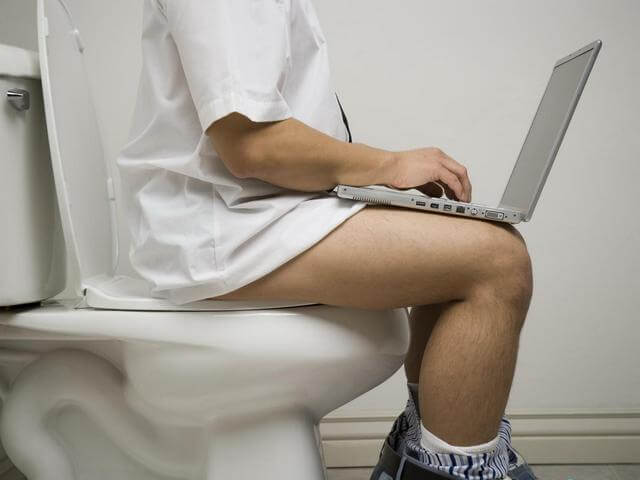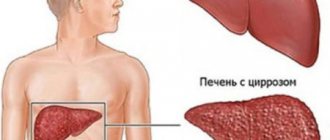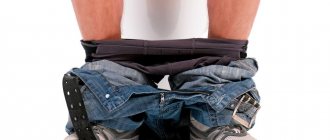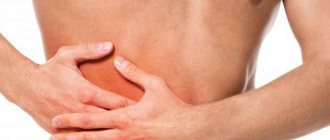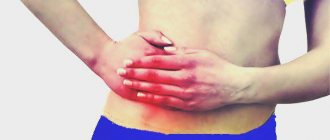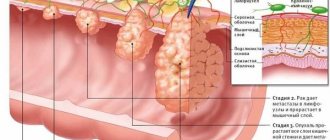The first signs of appendicitis in men
The first signs of appendicitis in men depend on the age group. In adults, inflammation of the appendix is accompanied by certain symptoms. Here are typical signs of appendicitis in men, symptoms, descriptions:
- Pain syndrome. In men, the exact location of the pain is determined only 2 to 7 hours after the onset of the attack. In this case, the pain increases during coughing and sneezing. Even ordinary hiccups increase the pain.
- Dyspeptic symptoms. Acute appendicitis is accompanied by attacks of nausea and repeated vomiting.
- Dry tongue. When examining the tongue, its dryness is noted. A thick white coating is clearly visible on the surface.
- Dryness of the mucous membranes of the oral cavity.
- Diarrhea. Diarrhea is typical for acute appendicitis. At the same time, the chair gets a light color.
- Increased body temperature. Indicators can rise to 38 degrees.
- Rapid heartbeat (tachycardia).
- Laroque's sign (spontaneous tightening of the right testicle). In addition, the appearance of a certain discomfort in the right side of the scrotum when it is pulled back (Britten's symptom) is recorded.
- Sharp pain in the right testicle. It occurs if you make a pressing movement at the base of the scrotum.
- Discomfort in the anal area.
- Acceptance of a forced position. The patient lies on his side with his legs pulled up to his chest.
Symptoms of appendicitis inflammation
Symptoms of appendicitis inflammation depend on the current stage of the disease.
- Catarrhal appendicitis . This period is accompanied by nausea, vomiting, and the development of diarrhea and increased urination are possible. The temperature rises slightly - up to 37 degrees. Possible weakness, attacks of tachycardia, dry mouth. The abdomen is soft, but painful when palpated. Pain is felt in the lower right quadrant of the abdomen.
- Phlegmonous appendicitis . Characterized by persistent nausea in combination with tachycardia. The temperature rises to 38 degrees. The stomach is tense. The pain takes on a pulsating character and becomes more intense.
- Gangrenous appendicitis (second - third day from the onset of the attack). Severe tachycardia. Vomiting is possible. Body temperature drops below 36 degrees. The stomach is swollen. Palpation is accompanied by severe pain. The painful syndrome weakens, creating the illusion of relief. The reason is the death of the nerve cells of the appendix.
- Perforated appendicitis (end of the third day). Indomitable vomiting, tachycardia. The abdomen is swollen, the abdominal wall is tense. The white coating on the tongue turns brown. The temperature rises to life-threatening levels. The moment the appendix bursts is accompanied by severe pain that does not subside (periods of relief are completely absent).
Signs of appendicitis in adult men 30 years old
Signs of appendicitis in men, symptoms, description, mostly standard. In approximately 90% of all diagnosed cases, the pathology is accompanied by unpleasant/painful sensations in the abdominal area. In adult men 30 years of age, an attack of appendicitis is accompanied by the following symptoms:
- sudden sharp pain of moderate intensity;
- nausea ending with emptying of the stomach;
- dry tongue and oral mucous membranes;
- coating on the tongue (initially white, turning brown as it worsens);
- fever, chills;
- loose stools (constipation is typical for teenagers);
- painful urge to empty the intestines;
- headaches, dizziness;
- poor appetite or its complete absence.
A specific symptom, typical specifically for men, is the involuntary tightening of the right testicle during an attempt to palpate the inflamed appendix.
With the development of acute appendicitis, a man’s well-being sharply and suddenly deteriorates. In young people, the signs of body intoxication are much more intense.
In addition to collecting complaints and examining the patient, the doctor can conduct a number of tests to confirm inflammation of the appendix. Here are a few symptoms characteristic of this particular pathology:
- Development of pain in the epigastric area or the entire surface of the abdomen with its subsequent movement to the lower right quadrant.
- Increased pain when tapping a finger on the anterior wall of the peritoneum.
- Development of sharp pain when the palm is lifted from the surface of the abdomen.
- Relieving the intensity of pain when turning on the right side. Lying on the left side, the patient feels increased pain.
How to check whether it is appendicitis or not
How to check whether it is appendicitis or not? There are several characteristic symptoms that indicate a developed inflammation of the appendix.
Appendicitis, symptoms in men and signs are practically no different from the “female” version of inflammation of the appendix, can be distinguished by the following symptoms:
- Kochera . Pain occurs in the epigastric region, then spreading over the entire surface of the peritoneum. Then they descend to the lower right side of the abdomen.
- Mendel . The combat syndrome is significantly enhanced by lightly tapping the surface of the anterior abdominal wall with a finger. The cause is inflammation of the peritoneum, which responds with pain to any irritation.
- Shchetkin-Blumberg . When the palm is abruptly removed from the abdomen, the patient experiences acute pain at the location of the inflamed appendix.
- Sitkovsky . Reduced pain when turning on the right side and a significant increase when positioned on the left side.
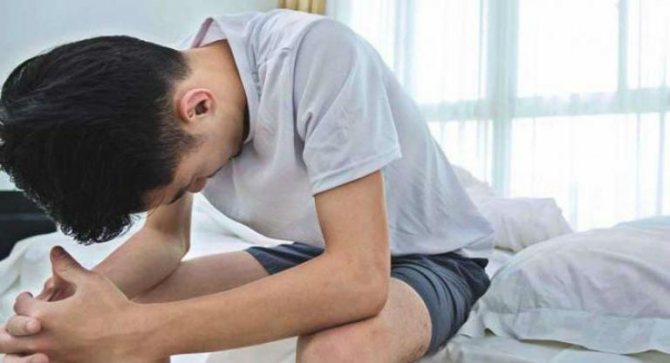
The nature of pain with appendicitis in men
The nature of pain during appendicitis in men and the location of its localization largely depends on the location of the inflamed appendix. In most cases, it is located in the lower right part of the abdomen and is directed towards the anterior abdominal wall.
But in some cases the anatomical position changes. The appendix can be located:
- In the middle part of the cecum. In this case, pain is felt in the area of the right hypochondrium and may resemble an attack of cholecystitis.
- Posteriorly, i.e. located in the direction of the kidneys and spinal column. Then the pain is felt in the lumbar region or in the right side, so an erroneous diagnosis of pyelonephritis, renal colic, etc. is possible.
- Closer to the pelvic area. For this case, pain in the pubic area or penis is typical.
A typical feature of the pain syndrome during the development of an attack of appendicitis is the impossibility of establishing the location of the pain at the very beginning of the development of the disease. Initially, a man’s entire abdomen hurts, and only after 2–7 hours does the pain acquire a certain direction . Thanks to this, he can show the doctor a specific point or area on the anterior abdominal wall.
In addition, the nature of the pain changes during sneezing, laughing, coughing, changing body and walking. Some soreness may be felt in the anal area, especially if the patient needs to empty the intestines.
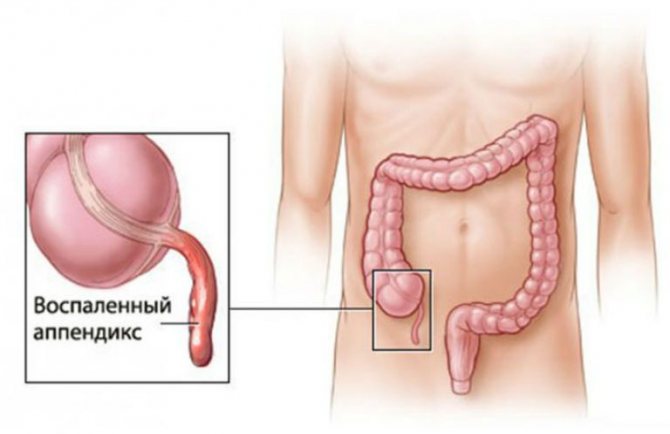
Appendicitis symptoms at home
The insidiousness of appendicitis lies in the fact that the disease successfully disguises itself as other diseases, and its first symptoms do not always allow the disease to be correctly identified. The disease develops very quickly and lasts 2-4 days, the inflammation is almost always acute. However, chronic appendicitis is also rare (about 100 times less common), in which symptoms characteristic of acute appendicitis periodically appear and then subside.
Acute pain in the abdominal area, most often manifested at night or in the morning, is the main symptom of appendicitis. At first, the pain may be spread throughout the abdomen, but soon it is concentrated in the lower right part of the abdomen, in the iliac region (below the navel and just above the thigh). Pressure on the iliac region is especially sensitive.
As the disease progresses, the pain intensifies and becomes throbbing. The pain may radiate to the right leg and intensify when laughing, coughing, or walking. The abdominal wall becomes tense.
To somewhat reduce pain, the patient has to take a certain position. Most often - lying down with legs bent at the knees. The pain may subside for a while, which is a signal of necrosis of the tissue of the wall of the appendix.
If the appendix is located on the left, the left side of the abdomen will hurt. In other cases, pain may be felt in the pubic area, pelvis, and lower back. When the process is located subhepatically, the pain is localized in the right hypochondrium, which is why it can be confused with the pain that appears during acute cholecystitis. Moreover, children and elderly people most often feel a slightly different pain, a dull ache in the abdomen. Because of this, diagnosing appendicitis in such cases is difficult.
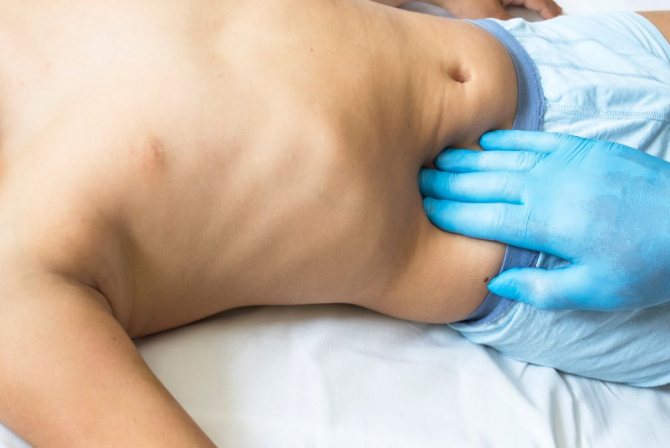
Lie flat on a hard surface and lightly press on your stomach in the area where the pain is located.
Signs of chronic appendicitis in men
Inflammation of the caecum can occur in a chronic format. As a rule, the disease is characterized by a vague clinical picture and the absence of specific symptoms.
The main symptom of the pathology is regularly developing pain (aching and mild) in the area where the appendix is located. Signs of chronic appendicitis in men: heaviness in the abdomen; increased gas formation; occasional nausea; digestive problems; poor appetite; alternating diarrhea/constipation; persistent low-grade fever.
The pain may intensify during significant physical activity, which is explained by an increase in pressure levels inside the abdominal cavity. During an exacerbation of appendicitis, nausea and vomiting develop.
The chronic form of appendicitis requires mandatory treatment, since the presence of a source of infection in the body negatively affects its functioning.
Appendicitis symptoms at home
The disease occurs when the appendix is inflamed - a small vermiform appendix located at the end of the cecum. It can become inflamed due to infectious and inflammatory diseases of the abdominal organs, due to digestive problems and other reasons.
It is impossible to say exactly where appendicitis hurts. This is usually the right side, but the pain can be localized in other areas. Only a doctor will give an exact answer during an examination. Moreover, the symptoms of an acute abdomen are a reason to immediately seek help.
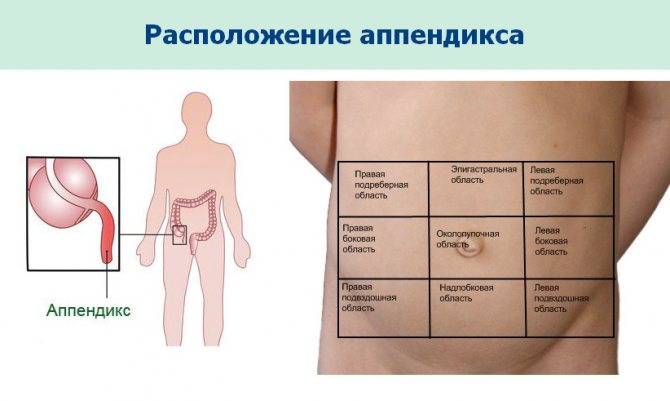
It is impossible to say exactly where appendicitis hurts, usually it is the right side, but the pain can be localized in other areas
In most cases, the symptoms of appendicitis fully indicate the diagnosis within 3 hours from the onset of their manifestation - the pain is localized and intensifies; the person practically loses the ability to move independently. There are also atypical cases when the appendix is located behind the cecum: pain appears on the side of the abdomen or in the lumbar region.
What are the symptoms to distinguish appendicitis at home:
- increased body temperature - 38 degrees and above;
- lack of appetite combined with lethargy, weakness, apathy;
- noticeable bloating with appendicitis;
- nausea and vomiting;
- cold sweat;
- cardiopalmus;
- pallor of the skin.
You can also detect appendicitis at home by the characteristic Kocher symptom - movement of the source of pain. It is first felt on the side of the navel, then it can move higher or lower, spread throughout the abdomen, and radiate to the right leg. Its character also changes - gradually the intensity increases, especially when talking, coughing, deep breathing, laughing.
Signs of appendicitis in men video
You are already familiar with the potential signs of appendicitis in men; the video will help you not to miss the onset of the disease.
Signs of appendicitis in men, symptoms, description are now known to you. If a typical clinical picture develops, urgent medical advice should be obtained. You can read reviews on this topic or write your opinion on the forum.
Read the article's reviews and comments on the forum about folk remedies
Read more on the topic:
Treatment of appendicitis with folk remedies without surgery
Why does appendicitis occur?
Doctors studying appendicitis have identified several options for the development of this disease. The reasons may be many factors, but the main one will be infection. If a man develops acute appendicitis, we can talk about the presence in his body of Staphylococcus aureus bacilli, Escherichia coli, streptococci and other bacteria that contribute to suppuration. Such bacteria should be located in the intestinal area, but if hygiene principles are not followed, they can enter the body.

Other reasons that can provoke inflammation of the appendix may be:
- narrowing or complete blockage of the appendix located in the appendix. This blockage can occur due to congenital pathologies or as a result of the presence of abnormal tumors or foreign bodies there. As a result of the blockage, stagnation in the blood may develop, which leads to necrosis of the appendix tissue;
- deterioration of blood supply to the walls of intestinal blood vessels;
- various kinds of neurogenic reactions and slowing of intestinal wall peristalsis, accompanied by the formation of mucus and excessive expansion of the intestinal lumen.
Symptoms of appendicitis in men most often appear if a person has problems with bowel movements and suffers from frequent constipation. Diseases of the heart muscle and infectious diseases can also provoke inflammation of the appendix. The first signs of appendicitis in men at risk will be more pronounced. Under no circumstances should they be ignored.
Men who have bad habits: alcohol abuse, smoking are also at risk.
It is important to monitor your health and at the first symptoms indicating a possible manifestation of appendicitis, contact a medical facility for those who suffer from infectious diseases of the pelvis.
